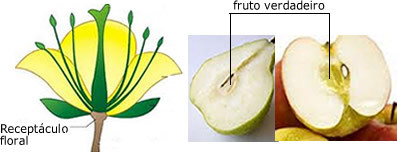Metamorphosis they are changes that some animals go through during their development. These changes involve changes in body structure and even in behavior, food and habitat of these animals. In short, we can say that the metamorphosis it would be the transition from larval to adult form during the animal's development.
This process, therefore, only occurs in animals that have indirect development, that is, in which there is the development of a larval stage. In animals with direct development, in which the young are born as a miniature of the adults, there is no metamorphosis.

The butterfly is an animal that undergoes metamorphosis, presenting different stages in its development (larva, pupa and adult). However, although we easily remember examples of insects, these are not the only animals that undergo metamorphosis, and this process is also observed in other invertebrates, such as echinoderms and molluscs
, and in vertebrates, like the amphibians. In this text we will focus on the metamorphosis of insects and amphibians frogs.Read too: Direct and indirect development
insect metamorphosis
When we talk about metamorphosis, it's almost impossible not to mention insects. In this group of animals, many go through this process, but it is important to make it clear that not all of them. Insects can be classified, according to their form of development, in ametabola, hemimetabola and holometabola.
Ametaboles
They are those that are born from the egg, presenting themselves as a miniature of the adult and not suffering, therefore, metamorphosis. As an example, we can mention moths.

Hemimetabolus
present partial or incomplete metamorphosis. As an example of hemimetabolous insects, we can mention locusts and crickets. The young individual (nymph) is very similar to the adult, but it is smaller and does not have wings. In this case, the insect undergoes gradual changes with each seedling, so that the wing buds grow little by little. With the final molt, we have an adult-sized, winged and sexually mature grasshopper.

holometaboles
In them there is a complete metamorphosis, with abrupt changes in body shape. As an example of holometabolic insects, we can mention the butterflies.
In the case of the butterfly, a larva, known as a caterpillar, is born from the egg. During this phase, the animal feeds and increases in size. After several changes, the caterpillar develops into pupa, a stage in which the animal does not feed. Inside the pupa, several modifications occur and guarantee the formation of an adult. The adult individual is very different from the larval stage.
Caterpillars, for example, have chewing mouthparts, which they use to feed on leaves. Adult butterflies, in turn, have sucking mouthparts, which they use to acquire nectar. Caterpillars do not have wings, while butterflies have the ability to fly. We realize, therefore, that these animals have structural differences and also in their life habits. These differences are important as they reduce competition between juveniles and adults of the same species. To learn more, read:Butterflies metamorphosis.

Metamorphosis in anuran amphibians
Anurans are another group of animals that have a well-known metamorphosis. In the frogs, for example, we can observe that from the egg a larval stage, called the tadpole, and that it undergoes a series of modifications until it becomes an adult.

O tadpole lives in the aquatic environment and has herbivorous habits. It has a tail very similar to a fish, which is important for its movement. The breathing is of the gill type and ensures the uptake of oxygen in the aquatic environment. During metamorphosis, legs appear, the tail is reabsorbed, the gills degenerate, and the lungs develop. After metamorphosis, the animal is able to live in the terrestrial environment, returning to the aquatic environment to mate.


